This is getting real. We have a cover mockup and a page on the Circa Press website.
If you haven’t pledged yet, go to my Kickstarter page and support this book. Ruffle some feathers. Make some waves. Stand and be counted!
This is getting real. We have a cover mockup and a page on the Circa Press website.
If you haven’t pledged yet, go to my Kickstarter page and support this book. Ruffle some feathers. Make some waves. Stand and be counted!
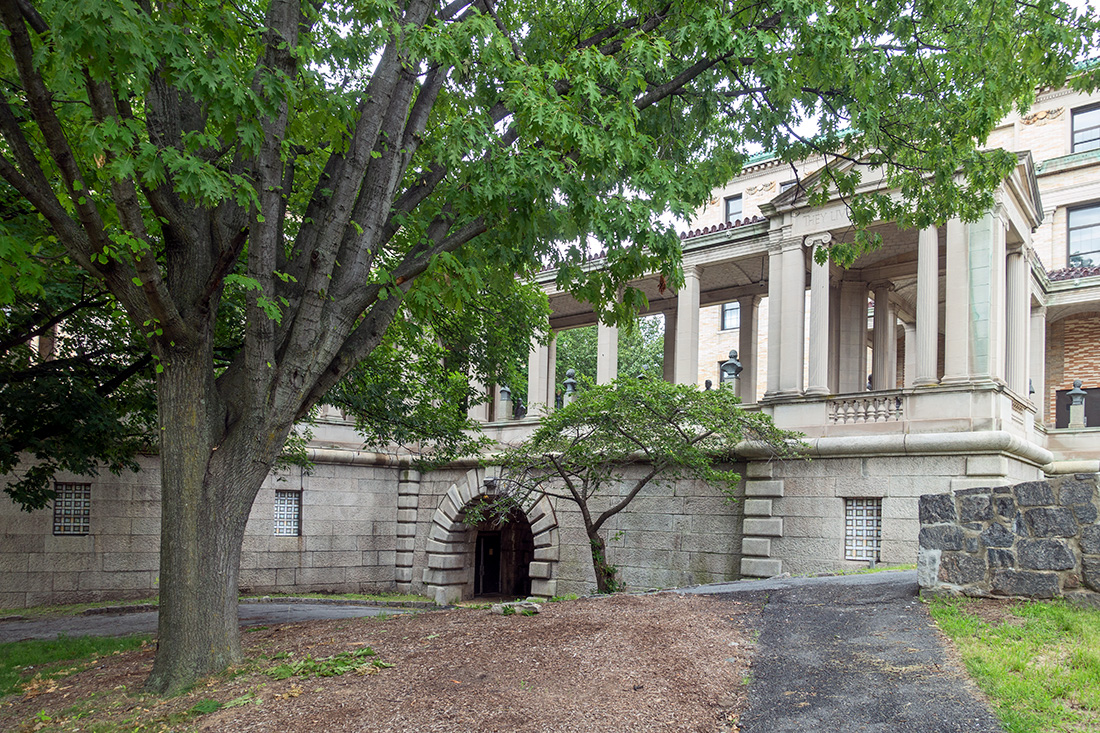 Hall of Fame for Great Americans, side view, University Heights — © Brian Rose
Hall of Fame for Great Americans, side view, University Heights — © Brian Rose
I‘ve seen a lot of the Bronx over the years. It’s a much maligned borough of New York that contains some of the city’s great institutions — the Bronx Zoo, the New York Botanical Garden, Fordham University, and the Yankees, no less. My son went to Bronx Science, one of the prestigious specialized high schools, which have been in the news lately because of the controversy around the entrance exam, which is the only criterion for admission. Bronx Science is an academic island of Asian and white students in a largely Latino borough. But that’s a controversy I’ll take up another time.
Last week, I visited the Bronx Community College campus for the first time. It was originally New York University before they sold the property to the state and headed downtown to Greenwich Village. They left behind a grouping of Stanford White neoclassical buildings, and a complex of structures designed by Marcel Breuer, one of the great modernist architects of the mid-20th century. Wrapping around the back of the White buildings is a colonnade containing the Hall of Fame for Great Americans, a series of busts depicting noteworthy Americans.
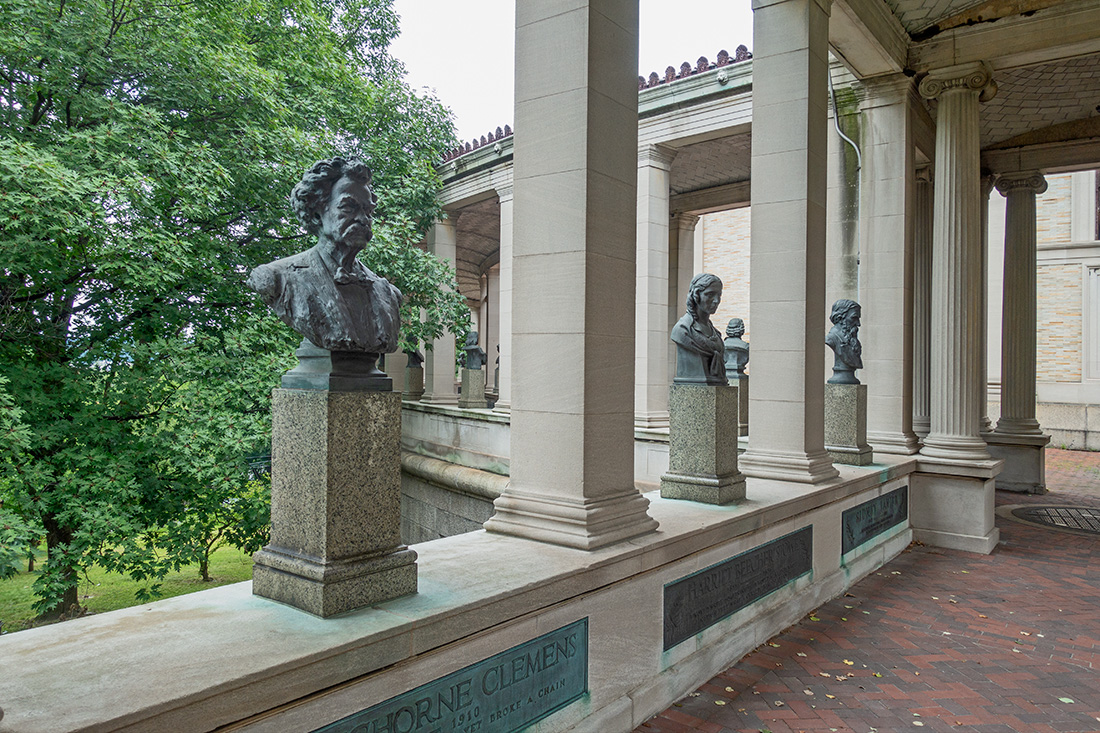
Samuel Clemens (Mark Twain), Hall of Fame for Great Americans — © Brian Rose
The Hall of Fame opened in 1900 and was the focus of much national attention. The public was invited to nominate worthy individuals, and an esteemed jury made the final selection. Some of the most important sculptors of the time, including Augustus Saint-Gardens and Daniel Chester French created the bronze busts. Additions were made over the years, but by and large, the selection represents a view of American culture from more than 100 years ago.
Henry Mitchell McCracken (NYU president), extremely passionate about history and civic duty, believed that Americans needed a place to honor great and influential figures from the past. Influenced by the Rumshalle (hall of fame) in Germany, the Chancellor pictured a pantheon where Americans could pay tribute to those who left their mark on America. MacCracken’s vision would become a reality and be dubbed the Hall of Fame for Great Americans, the first Hall of Fame ever built in the United States.
The College on a Hill: A History of New York University’s Bronx Campus Told Through its Architecture
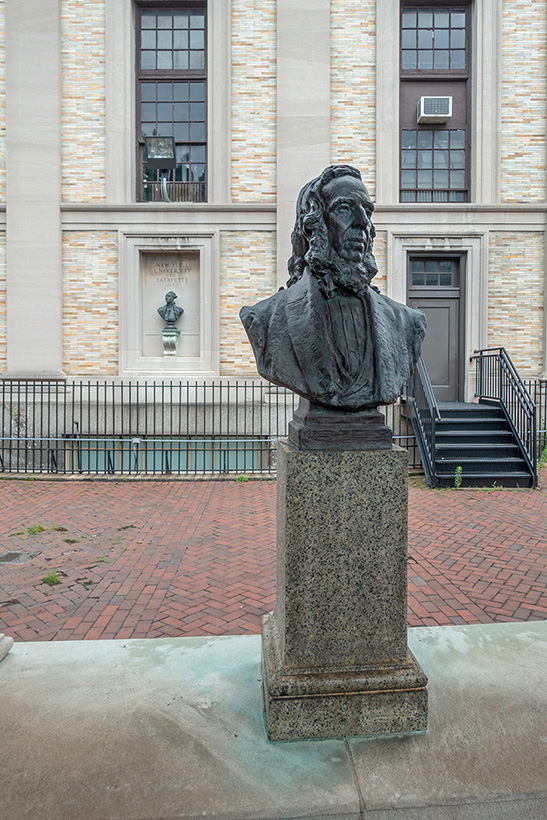
Peter Cooper, Hall of Fame for Great Americans, University Heights — © Brian Rose
Over the years, the Hall of Fame lost its centrality. The heroic classical approach to honoring achievement fell out of favor, and when NYU consolidated its operation in Manhattan, the Hall of Fame and the entire Stanford White grouping of library and classrooms buildings was neglected by the state of New York. It did not help that the Bronx in the ’70s and ’80s became an urban hellscape, and few people ventured beyond Yankee Stadium on the 4 train. While the Bronx has rebounded in the intervening years, the Hall of Fame and its accompanying buildings remains in deplorable shape.
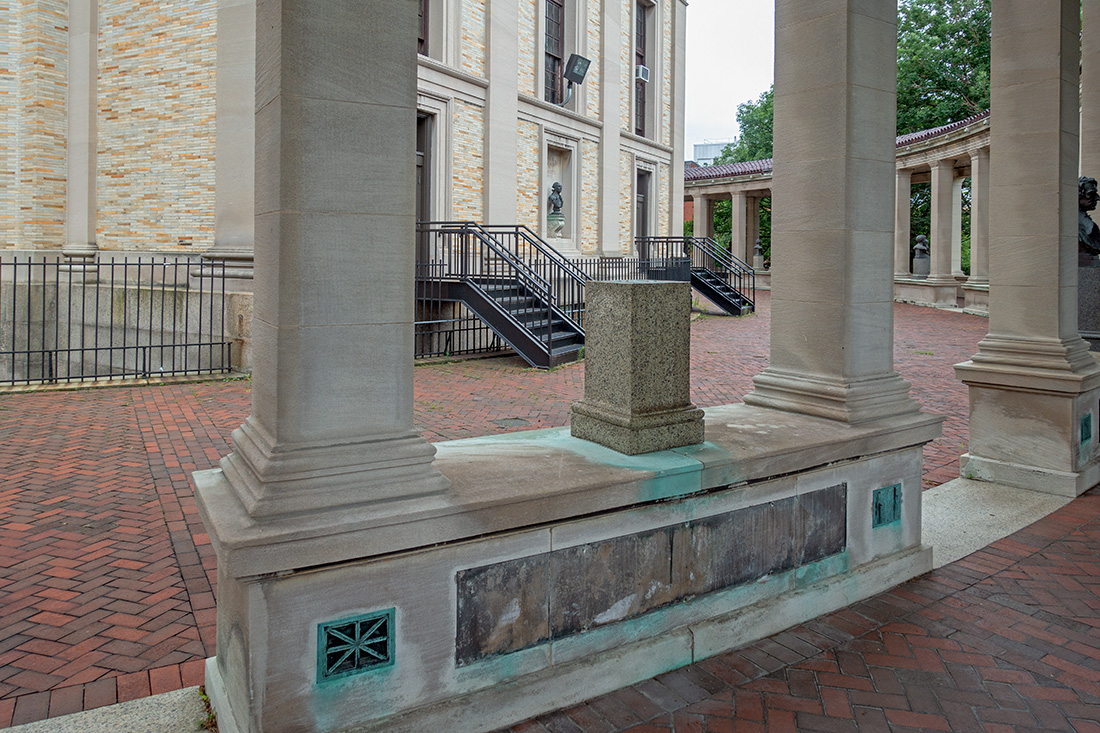
Empty pedestal, Robert E. Lee bust, Hall of Fame for Great Americans — © Brian Rose
Last year (2017), soon after the neo-Nazi violence in Charlottesville, Virginia, spurred by the planned removal of a Robert E. Lee sculpture, many communities began reassessing the presence of Confederate symbols in parks and public squares. With the blessing of local politicians and the president of the college, Governor Andrew Cuomo ordered the removal of two sculptures from the Hall of Fame: Robert E. Lee and Stonewall Jackson. A year later, the pedestals remain empty, and no signage indicates who, what, or why.
I am no apologist for Confederate generals, who were undoubtedly on the wrong side of history, and fought for the preservation of slavery. But I do not believe that removing statues, especially without providing explanation, is the answer. I have addressed this issue before in my blog. The Hall of Fame should not be viewed as a contemporary attempt at venerating American heroes. It is, as a form of cultural expression, an important historical artifact. It is also an important piece of artistic and architectural heritage. Robert E. Lee was placed next to his Union counterpart Ulysses S. Grant. They were adversaries, representing the two sides of the conflict that tore apart the nation — that in the age of Trump revanchism remains an unresolved conflict. We should be talking about what these two men represented, and how they came to be on these pedestals in the Bronx.
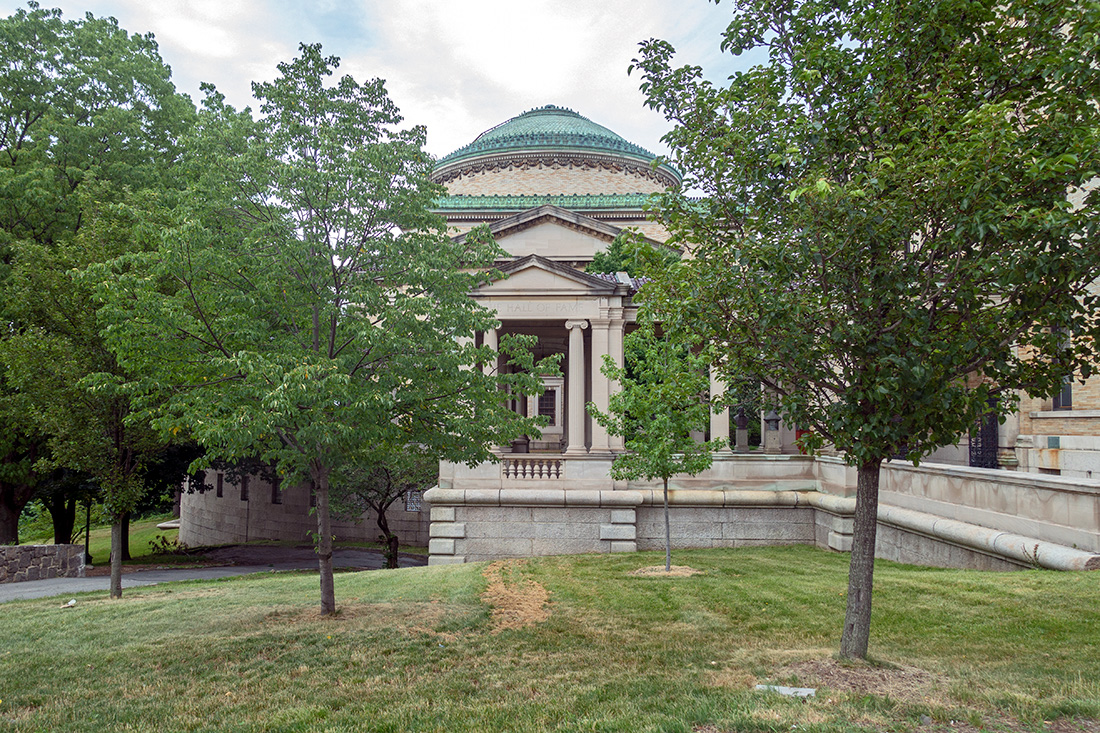
Gould Memorial Library, Stanford White architect, University Heights — © Brian Rose
If you look at the choices made, one could say that the entire Hall of Fame of Great Americans has a dubious legitimacy. There are few women, few African Americans, and many of the great figures represented had serious flaws. Andrew Jackson led a campaign of genocide against Native Americans. Washington and Jefferson owned slaves. Many of the great industrialists achieved their wealth on the backs of poor laborers working in harsh conditions. Even Stanford White, the architect of the complex was guilty of raping a teenage girl, and was then murdered years later by her husband who claimed White had ruined her. Should we blow up the whole edifice?
When I was there last week, there were no other visitors.
Next up, Marcel Breuer, and the one of the great modernist masterpieces in the world — largely unknown — in the Bronx.
SUPPORT ATLANTIC CITY ON KICKSTARTER
My photobook, Atlantic City, will also include text mostly in the form of news quotes and tweets from Donald Trump. True to form, Trump does not admit to any responsibility for Atlantic City. Made a lot of money, got out, good timing, no one gives him credit. Losers. Haters. Sad.
 |  |
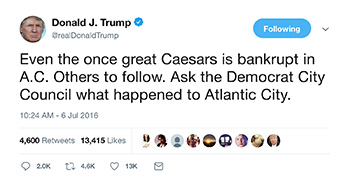 | 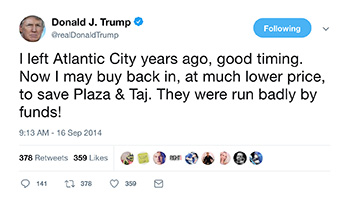 |
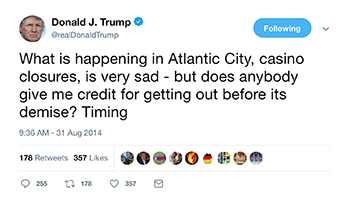 |  |
 |  |
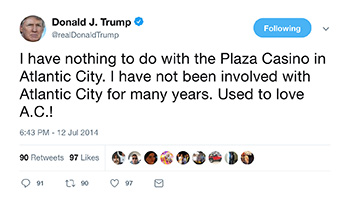 |  |
 | 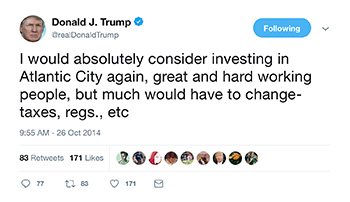 |
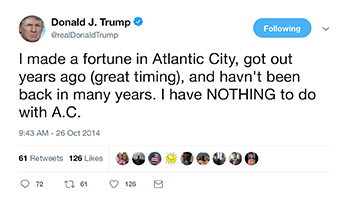 |  |
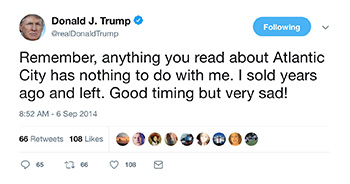 |  |
This is my Atlantic City Kickstarter video made with help from my son, Brendan Rose. it starts in front of the abandoned Trump Plaza next to historic Boardwalk Hall on the left.
My campaign is off to a good start. It might quiet down over the 4th of July holiday, but this is a good moment to consider patriotism as a possible reason to support this book. It strikes at the heart of Donald Trump’s fraudulent business career — and equally fraudulent presidency. Atlantic City is Donald’s Trump’s dystopian America.
My Kickstarter campaign to support Atlantic City has been launched!
ATLANTIC CITY — A PHOTO BOOK PROJECT
When Donald Trump was elected in November 2016, I knew immediately that I needed to do something as an artist and photographer. My work has always focused on the urban/social landscape, but I’ve generally avoided politics. Trump’s election, however, signaled a grave emergency, a threat to democracy and the freedom we take for granted as Americans.
Within days after the election, I drove down to Atlantic City on a hunch that this place, the epitome of Trumpian dystopia, would serve as a metaphor for the overall state of affairs in the United States.
I started by photographing Trump’s failed casinos, and then moved to the ravaged neighborhoods adjacent to these architectural behemoths, these internalized money machines. Rather than saving a faded Atlantic City, they have sucked the life blood out of its veins and enriched grifters like Donald Trump.
ATLANTIC CITY — CIRCA PRESS
I am fortunate to be working with Circa Press, a distinguished publisher of books on architecture and culture. And I am especially honored that Paul Goldberger, the Pulitzer Prize winning critic, is writing the introduction.
Books like this are expensive to produce, and I need your help in covering some of the production costs. Your pledge to my Kickstarter campaign will make this book a reality, and you’ll be rewarded by receiving a signed copy of Atlantic City, or one of the other awards offered.
This book won’t bring down Donald Trump, but it might help. It’s time for artists to step up — for all of us to step up. Make your voice heard by supporting Atlantic City.
— Brian Rose
We drove down to Atlantic City today to work on the video for my soon to be launched Kickstarter campaign to raise money for my upcoming book. It was a little damp, a little foggy, with few people on the beach. Even the boardwalk was relatively sparse for a summer day.
I worked from a script as I’ve done in the past, but while setting up one of the shots, I went off script and just started talking. I’m calling this my Trumpian Dystopia speech. Enjoy!
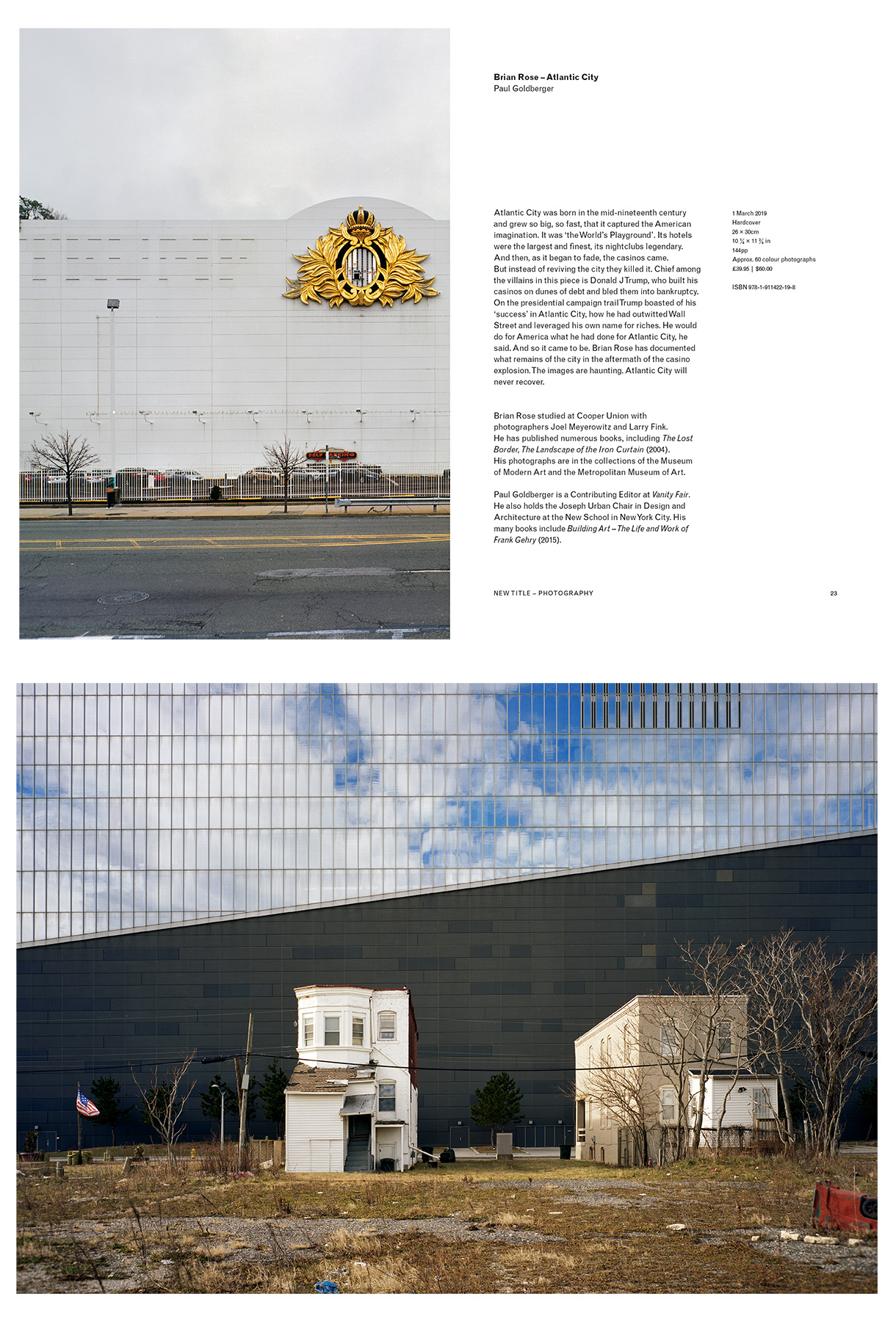
Circa Press catalogue pages — click to enlarge
Catalogue page for Atlantic City which will be published by Circa Press, a London based publisher of exceptional books about art and design. Circa was founded by David Jenkins, the former chief editor of Phaidon, and the introduction for Atlantic City is being written by Paul Goldberger, Pulitzer Prize winning critic for the New York Times and The New Yorker.
I’m going to Atlantic City tomorrow to shoot my Kickstarter video. The weather is looking stormy. There’s a campaign afoot promoting an Atlantic City comeback — but it’s a sham. The former Trump Taj Mahal has morphed into the Hard Rock Casino and the Revel is reopening as Ocean Resort Casino. As before, the jobs will go primarily to suburban commuters, and I would not bet on the success of two new casinos in an already shaky market. Hard Rock has the best chance because of its already established brand and ability to book top entertainment. Meanwhile out on Pacific and Atlantic Avenues, little will change for the drifters and homeless.
Major announcement!
I am pleased to report that my photographs of Atlantic City have found a publisher, Circa Press, of London, and that the book will be released early in 2019. The project is well underway and we are working on the design of the book now. This will be my fourth book in eight years.
The introduction for Atlantic City will be written by the esteemed architecture critic Paul Goldberger. Here is his blurb for the book:
Atlantic City was born in the mid-nineteenth century and grew and grew. It grew so big, so fast, that it captured the American imagination. It was ‘the World’s Playground’. Its hotels were the largest and finest, its nightclubs legendary, its boardwalk an endless promenade. And then, as it began to fade, the casinos came. And instead of reviving the city they killed it. Chief among the villains in this piece is Donald J Trump, who built his casinos on dunes of debt and bled them into bankruptcy. On the presidentialcampaign trail Trump boasted of his ‘success’ in Atlantic City, how he had outwitted Wall Street and leveraged his own name for riches.He would do for America what he had done for Atlantic City, he said. And so it came to be. Brian Rose has documented what remains of the city in the aftermath of the casino explosion. The images are haunting. Atlantic City will never recover.
Some of the production costs will need to be defrayed, so I will be initiating a Kickstarter campaign later this summer. Stay tuned for more information.
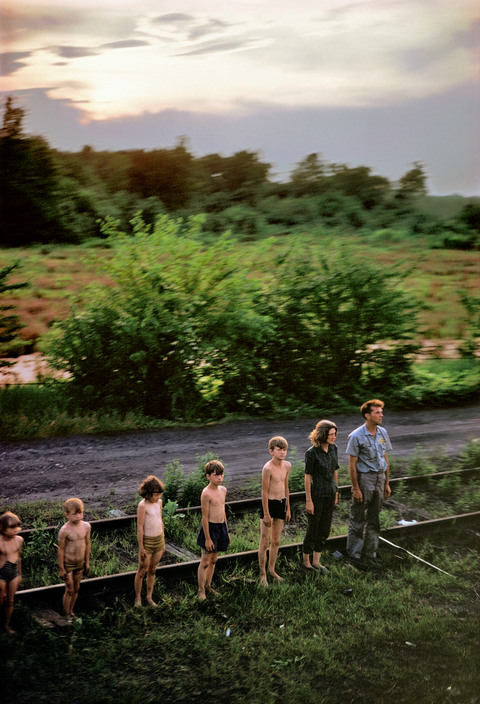
Paul Fusco, USA. Harmans, MD. 1968. Robert KENNEDY funeral train.
Paul Fusco’s photographs made from the RFK funeral train are a remarkable portrait of America in 1968, one of the most tempestuous years in modern American history. There were assassinations, riots, and the war in Vietnam. For a few hours in June, people stood silently, reverently, to pay their respects as the cortege train rolled by.
I watched on TV. I was 14 years old in 1968, and my hopes for the future felt crushed. Fifty years later, we are in another moment of national crisis no less serious, though without the violence of ’68. The comparative normality of the present makes it all the more insidious as Trump and the Republican party chip away the foundation of our shared values piece by piece. It is a slow motion death — and we stand transfixed as the cortege train of democracy rolls by.
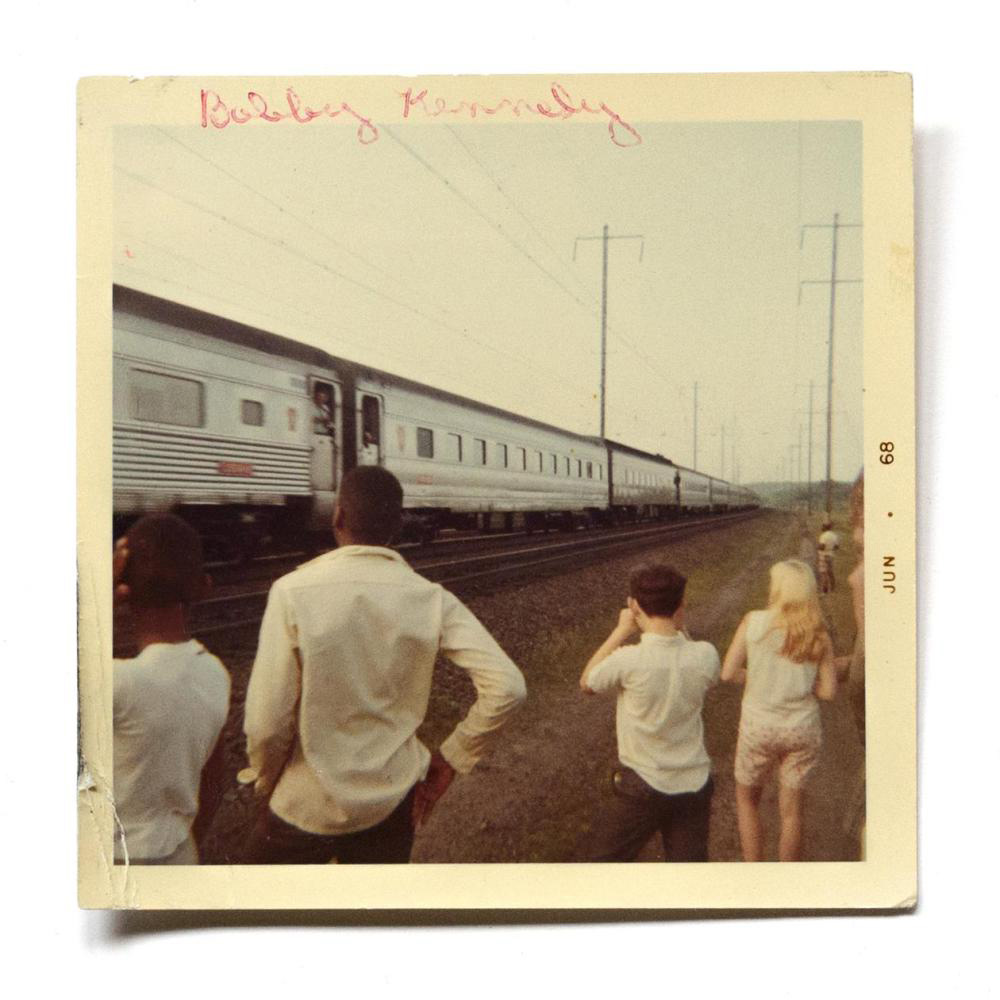
A Dutch artist, Rein Jelle Terpstra, revisited Paul Fusco’s photographs by tracking down some of the people who witnessed the RFK train in 1968. He recorded their recollections and collected their snapshots and super 8 movies. It’s a great idea, but the execution is thin, a multi-screen repetition of a handful of faded still images and flickering film of the train in motion. The original Fusco images remain powerful and iconic.
We need more from artists, curators, and publishers — now.
“No reason to get excited,” the thief, he kindly spoke
“There are many here among us who feel that life is but a joke
But you and I, we’ve been through that, and this is not our fate
So let us not talk falsely now, the hour is getting late”
— Bob Dylan
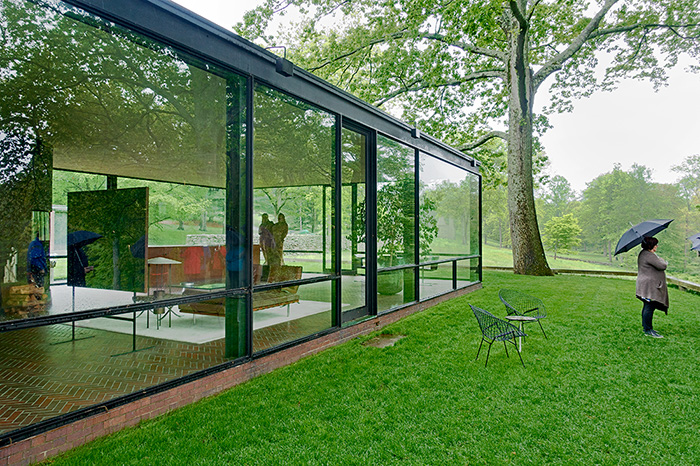
The Glass House, New Canaan, Connecticut — © Brian Rose
Yesterday, I toured the Philip Johnson Glass House with Cooper Union alumni. It rained the entire time we were there, but the atmosphere was beautiful, drenched in the vibrant green of early Spring. In the various structures on the estate, one can trace Johnson’s chameleon-like career, morphing from one architectural style to another.
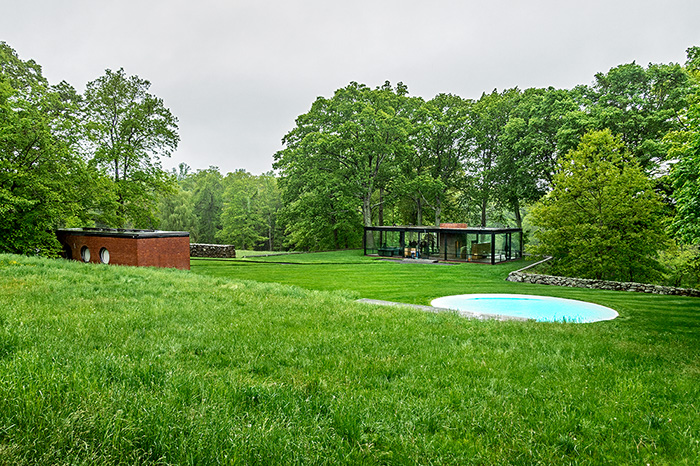
The Glass House, New Canaan, Connecticut — © Brian Rose
The Glass House itself, of course, is Johnson’s homage to Mies van der Rohe — which I have seen photographs of many times. What was most surprising to me was the landscape surrounding it. How the house sits on a plateau overlooking carefully orchestrated views, perhaps reminiscent of Olmsted’s urban pastorales, Central Park or Prospect Park.
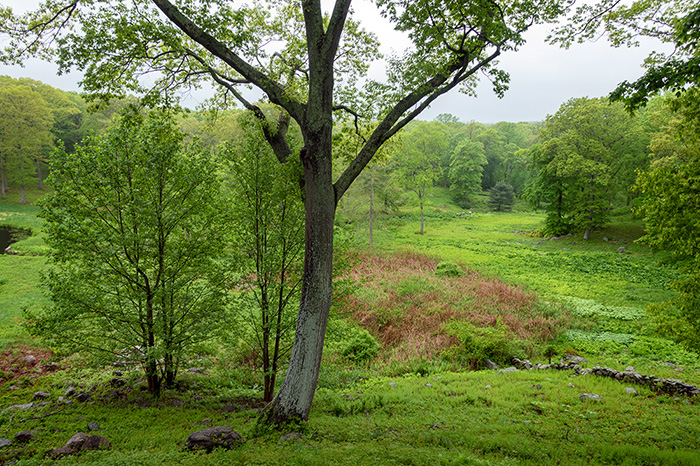
Glass House grounds — © Brian Rose
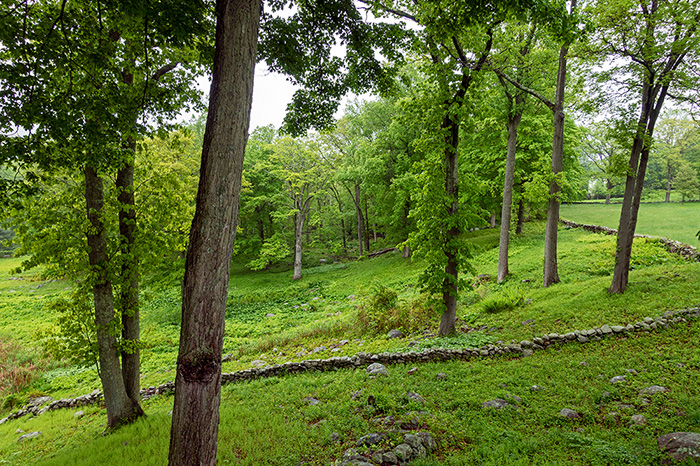
Glass House grounds — © Brian Rose
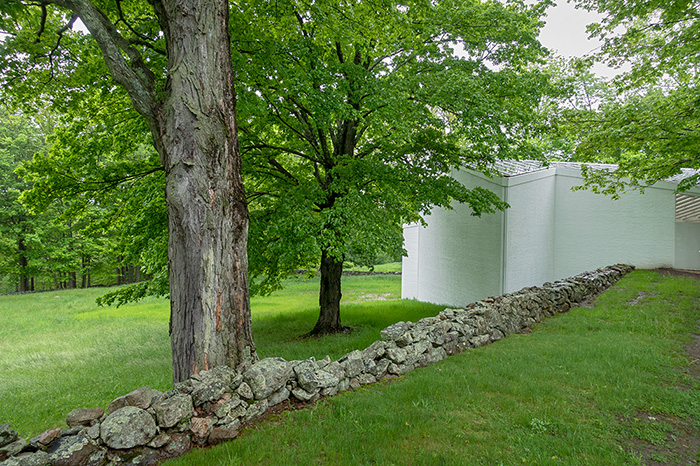
Sculpture Gallery — © Brian Rose
No doubt intended by Johnson, the Glass House is not simply “the house,” but the integration of the structures with the landscape. Inside and outside are blurred, and each of the separate buildings, or follies, have different purposes or play different symbolic roles.
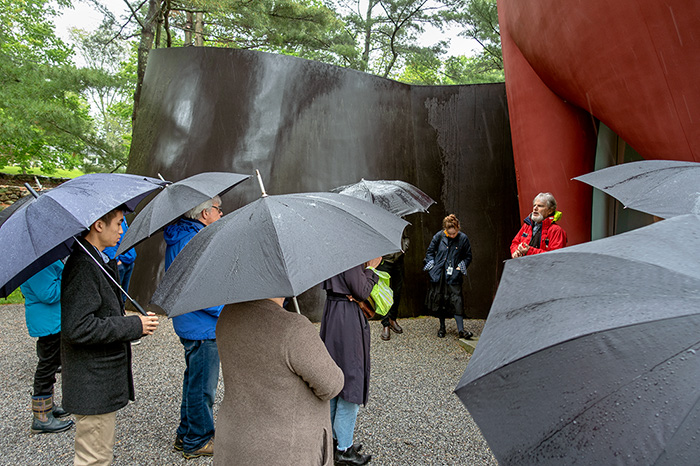
Da Monsta with tour group — © Brian Rose
We ended the tour at Da Monsta, Johnson’s last structure on the site. It is expressive of the non-rectilinear design of architects like Frank Gehry and Daniel Libeskind — deconstructivism — and Johnson, as always, followed others, and championed their work. That is his greatest legacy. He used his money, charm, and intelligence to elevate the place of modern architecture in our culture.

Pacific Avenue, Atlantic City — © Brian Rose
A little piece of pre-casino Atlantic City on Pacific Avenue. I found myself talking to an older man coming out of a convenience store. I told him what I was doing — about how I was photographing the city and the legacy of failure left by Donald Trump. He said Trump didn’t pay his bills and thousands of people lost their jobs.
He said that he used to deliver sandwiches to Frank. Frank? Frank Sinatra. He used to stay at the Sands — just to the right of the picture above — he’d usually order 25 or so sandwiches for all his pals. The Sands Casino Hotel was bought up by Carl Icahn, Trump’s business friend, and in 2007, having been milked to death, it was imploded in a grand fireworks display. It’s a vacant lot today.
Standing on the boardwalk looking inland — if you leave things vacant long enough in Atlantic City it will revert back to the sandbar that it naturally is. I assume that this block long party wall was meant to abut another casino hotel. But this being Atlantic City, windowless casino walls become virtually permanent features of the urban landscape.
Showboat and its casino closed in 2014 along with several other AC casinos, but has since reopened as a giant plain vanilla hotel. Obviously, it can’t make money. These things have to be write-offs awaiting possible rebirth as rebranded casinos. What else is there? Perhaps, money laundering machines, which is almost certainly true of the former Trump casinos.
Meanwhile, the sand drifts.
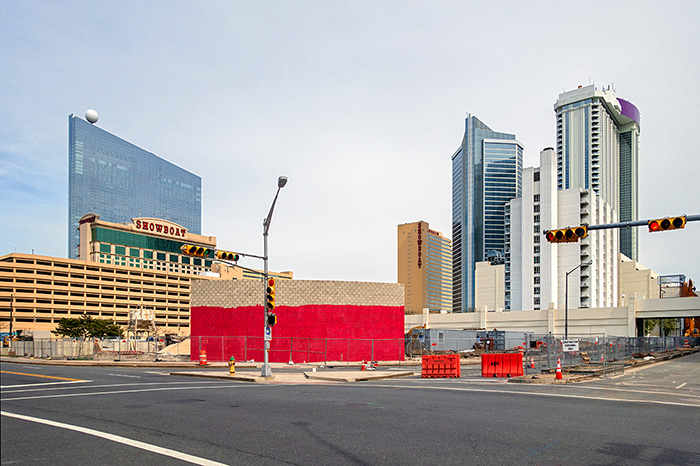
Pacific Avenue, Atlantic City — © Brian Rose
The Trump Taj Mahal (seen at right) has been stripped of its faux Indian/Arabian/Russian motifs, and new owner Hard Rock is in the process of installing its characteristic rock/guitar/burgers theme. Hard Rock, which was founded in in 1971 in London by a couple of Americans is now owned by the Seminole Indian Tribe and is headquartered in Orlando, Florida. Trump, of course, parlayed his casino bankruptcies and reality TV show into a gig as president of the United States. It all makes sense in Atlantic City.
Pauline’s Prairie
During the mid to late 1960s, Atlantic City’s housing czar, Pauline Hill, dismantled an entire neighborhood to make way for commercial development.
Eighty acres in the city’s South Inlet section were razed. Forty-five-hundred people were displaced.
But development, in large part at least, never came. In the ensuing decades, the South Inlet remained a scattering of mostly low-rise housing pocked by barren lots.
— Press of Atlantic City